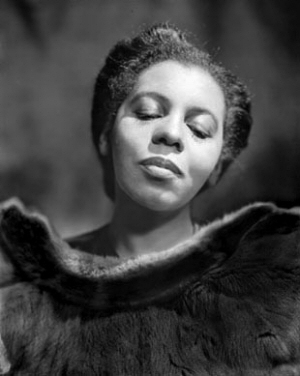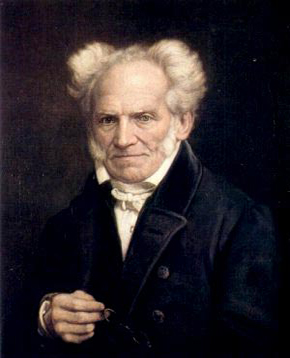|
Alexander Lackie Archibald
Alexander Lackie Archibald (March 5, 1788 – February 12, 1859) was a Nova Scotia farmer, tanner, boot manufacturer and politician. He represented Truro township in the Nova Scotia House of Assembly from 1830 to 1843 and from 1848 to 1851 as a Conservative. He was born in Truro, Nova Scotia Truro (Scottish Gaelic: ''Trùru'') is a town in central Nova Scotia, Canada. Truro is the shire town of Colchester County and is located on the south side of the Salmon River (Nova Scotia), Salmon River floodplain, close to the river's mouth ..., the son of Matthew Archibald and Janet Fisher. Archibald was married twice: first to Mary Fulton in 1810 and then to Christiana Nicholson in 1831. Archibald was defeated by William Fleming when he ran for reelection in 1847; Fleming's election was overturned in the following year and Archibald was declared elected. As a respected representative of the Truro township, he commissioned a statue of his father to be built in the town square. H ... [...More Info...] [...Related Items...] OR: [Wikipedia] [Google] [Baidu] |
Nova Scotia
Nova Scotia is a Provinces and territories of Canada, province of Canada, located on its east coast. It is one of the three Maritime Canada, Maritime provinces and Population of Canada by province and territory, most populous province in Atlantic Canada, with an estimated population of over 1 million as of 2024; it is also the second-most densely populated province in Canada, and second-smallest province by area. The province comprises the Nova Scotia peninsula and Cape Breton Island, as well as 3,800 other coastal islands. The province is connected to the rest of Canada by the Isthmus of Chignecto, on which the province's land border with New Brunswick is located. Nova Scotia's Capital city, capital and largest municipality is Halifax, Nova Scotia, Halifax, which is home to over 45% of the province's population as of the 2021 Canadian census, 2021 census. Halifax is the List of census metropolitan areas and agglomerations in Canada, twelfth-largest census metropolitan area in ... [...More Info...] [...Related Items...] OR: [Wikipedia] [Google] [Baidu] |
Truro, Nova Scotia
Truro (Scottish Gaelic: ''Trùru'') is a town in central Nova Scotia, Canada. Truro is the shire town of Colchester County and is located on the south side of the Salmon River (Nova Scotia), Salmon River floodplain, close to the river's mouth at the eastern end of Cobequid Bay. History The area has been home to the Mi'kmaq people for several centuries. The Mi'kmaq language, Mi'kmaq name for the Truro area, "Wagobagitik" means "end of the water's flow". Mi'kmaq people continue to live in the area at the Millbrook and Truro reserves of the Millbrook – We’kopekwitk band. Acadian settlers came to this area in the early 1700s. The Mi'kmaq name for the Truro area was shortened by the settlers to "Cobequid", and the bay to the west of the town is still named Cobequid Bay. By 1727, the settlers had established a small village near the present downtown site of Truro known as "Vil Bois Brule" (Village in the burnt wood). Many Acadians in this region left in the Acadian Exodus which ... [...More Info...] [...Related Items...] OR: [Wikipedia] [Google] [Baidu] |
Nova Scotia House Of Assembly
The Nova Scotia House of Assembly (; ), or Legislative Assembly, is the deliberative assembly of the General Assembly of Nova Scotia, and together with the lieutenant governor of Nova Scotia makes up the Nova Scotia Legislature. The assembly is the oldest in Canada, having first sat in 1758; in 1848, it was the site of the first responsible government in the British Empire. Bills passed by the House of Assembly are given royal assent by the lieutenant governor in the name of the King of Canada. Originally (in 1758), the Legislature consisted of the Crown represented by a governor (later a lieutenant governor), the appointed Nova Scotia Council holding both executive and legislative duties and an elected House of Assembly (lower chamber). In 1838, the council was replaced by an executive council with the executive function and a legislative council with the legislative functions based on the House of Lords. In 1928, the Legislative Council was abolished and the members pensio ... [...More Info...] [...Related Items...] OR: [Wikipedia] [Google] [Baidu] |
Matthew Archibald
Matthew Archibald (1745 – January 18, 1820) was an Irish-born farmer, tanner and political figure in Nova Scotia. He represented Truro Township in the Nova Scotia House of Assembly from 1785 to 1799. He was born in Derry, Northern Ireland, the son of Samuel Archibald and Eleanor Taylor, and came with his family to Londonderry, New Hampshire in 1757. The family moved to Nova Scotia five years later. In 1767, Archibald married Janet Fisher. He was named a justice of the peace and became coroner for Colchester District in 1786. He lived at Bible Hill; Archibald is believed to have given the town its name. Bible Hill continues to celebrate a festival in Archibald's honor yearly to commemorate his birthday. Archibald died in Truro. His son Alexander Lackie Archibald Alexander Lackie Archibald (March 5, 1788 – February 12, 1859) was a Nova Scotia farmer, tanner, boot manufacturer and politician. He represented Truro township in the Nova Scotia House of Assembly fro ... [...More Info...] [...Related Items...] OR: [Wikipedia] [Google] [Baidu] |
1788 Births
Events January–March * January 1 – The first edition of ''The Times'', previously ''The Daily Universal Register'', is published in London. * January 2 – Georgia ratifies the United States Constitution, and becomes the fourth U.S. state under the new government. * January 9 – Connecticut ratifies the United States Constitution, and becomes the fifth U.S. state. * January 18 – The leading ship (armed tender HMS ''Supply'') in Captain Arthur Phillip's First Fleet arrives at Botany Bay, to colonise Australia. * January 22 – The Congress of the Confederation, effectively a caretaker government until the United States Constitution can be ratified by at least nine of the 13 states, elects Cyrus Griffin as its last president.''Harper's Encyclopaedia of United States History from 458 A. D. to 1909'', ed. by Benson John Lossing and, Woodrow Wilson (Harper & Brothers, 1910) p167 * January 24 – The La Perouse expedition in the ''Astrolabe'' and '' Boussole'' arrives ... [...More Info...] [...Related Items...] OR: [Wikipedia] [Google] [Baidu] |
1859 Deaths
Events January–March * January 21 – José Mariano Salas (1797–1867) becomes Conservative interim President of Mexico. * January 24 ( O. S.) – Under the rule of Alexandru Ioan Cuza, the provinces of Wallachia and Moldavia are united under the jurisdiction of the Ottoman Empire. It would be a principal step in forming the modern state of Romania. * January 28 – The city of Olympia is incorporated in the Washington Territory of the United States of America. * February 2 – Miguel Miramón (1832–1867) becomes Conservative interim President of Mexico. * February 4 – German scholar Constantin von Tischendorf rediscovers the '' Codex Sinaiticus'', a 4th-century uncial manuscript of the Greek Bible, in Saint Catherine's Monastery on the foot of Mount Sinai, in the Khedivate of Egypt and arranges for its presentation to his patron, Tsar Alexander II of Russia at Saint Petersburg. * February 14 – Oregon is admitted as the 33rd U.S. state. * February 12 – The Me ... [...More Info...] [...Related Items...] OR: [Wikipedia] [Google] [Baidu] |
19th-century Members Of The Nova Scotia House Of Assembly
The 19th century began on 1 January 1801 (represented by the Roman numerals MDCCCI), and ended on 31 December 1900 (MCM). It was the 9th century of the 2nd millennium. It was characterized by vast social upheaval. Slavery was abolished in much of Europe and the Americas. The First Industrial Revolution, though it began in the late 18th century, expanded beyond its British homeland for the first time during the 19th century, particularly remaking the economies and societies of the Low Countries, France, the Rhineland, Northern Italy, and the Northeastern United States. A few decades later, the Second Industrial Revolution led to ever more massive urbanization and much higher levels of productivity, profit, and prosperity, a pattern that continued into the 20th century. The Catholic Church, in response to the growing influence and power of modernism, secularism and materialism, formed the First Vatican Council in the late 19th century to deal with such problems and confi ... [...More Info...] [...Related Items...] OR: [Wikipedia] [Google] [Baidu] |
People From Truro, Nova Scotia
The term "the people" refers to the public or common mass of people of a polity. As such it is a concept of human rights law, international law as well as constitutional law, particularly used for claims of popular sovereignty. In contrast, a people is any plurality of persons considered as a whole. Used in politics and law, the term "a people" refers to the collective or community of an ethnic group or nation. Concepts Legal Chapter One, Article One of the Charter of the United Nations states that "peoples" have the right to self-determination. Though the mere status as peoples and the right to self-determination, as for example in the case of Indigenous peoples (''peoples'', as in all groups of indigenous people, not merely all indigenous persons as in ''indigenous people''), does not automatically provide for independent sovereignty and therefore secession. Indeed, judge Ivor Jennings identified the inherent problems in the right of "peoples" to self-determination, as i ... [...More Info...] [...Related Items...] OR: [Wikipedia] [Google] [Baidu] |



